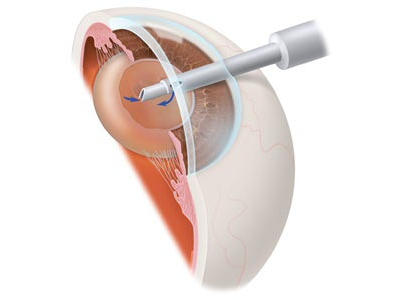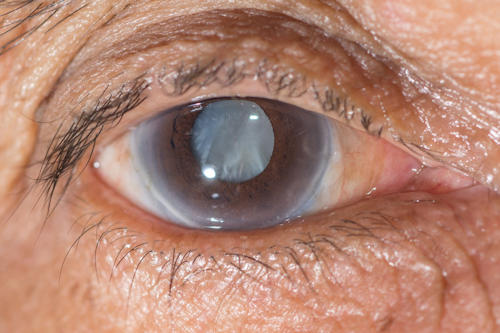
Cataract
The image entering the eye first passes through the outermost layer of the eye called the cornea, then focuses by the transparent lens behind the pupil and is transmitted to the nerve layer. Cataract is the loss of transparency of this lens due to the accumulation of protein molecules within it.In the clouded lens, light permeability decreases, causing hazy, blurred vision problems. Double vision problems can also rarely occur in patients. Cataract manifests itself with symptoms such as blurred vision, perception of colors as cold, difficulty in distinguishing colors, deterioration of night vision, glare when looking at bright light, eye fatigue, and headache. In advanced stages, due to the further decrease in the lens's light permeability, the patient will only perceive light but will not be able to see anything.

Healthy Lens
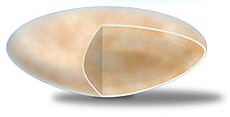
Cataract Lens
- Age-related cataracts: This is the most common type of cataract. Normally, our eye lens consists of water and protein. The amount of protein is sufficient to keep the lens transparent, but with age, it begins to accumulate and condense regionally or generally. Oxidative changes are thought to be the most important factors that disrupt lens metabolism with age. Some studies have shown that protection from UV light and a diet consisting of antioxidants such as lutein, zeaxanthin, Omega 3, and vitamins E and C can reduce or delay cataract formation. Although prevention is important, it should not be forgotten that cataract formation may sometimes be inevitable due to age or genetic makeup.
- Congenital cataracts: This type of cataract seen in babies needs to be treated promptly. If the cataract-forming eye is not treated, amblyopia (lazy eye) may occur because the eye cannot learn to see.
- Other cataracts: These cataracts are usually caused by intraocular diseases, eye trauma, metabolic diseases, and long-term use of medications such as corticosteroids.
- Cataracts due to diabetes: Excessive accumulation of glucose due to diabetes causes the fibers in the eye lens to fill with water, leading to loss of lens transparency and cataract formation.
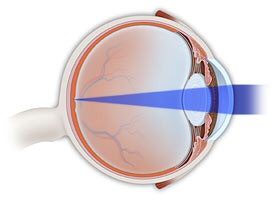
Normal Vision
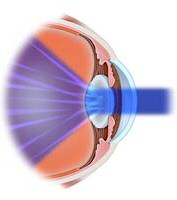
Cataract Vision
Cataract Treatment
Phacoemulsification surgery, abbreviated as Phaco, is performed with Phacoemulsification Surgery. It is a sutureless and needleless operation performed under topical anesthesia. Unlike older techniques, there is no need to wait for the cataract to mature for surgery.In the Phaco technique, preoperative tests are performed on the patient to determine the characteristics and number of the intraocular lens to be implanted. The eye is entered through an incision smaller than 3 mm, and the cataractous lens is fragmented with sound waves (ultrasonic waves) and aspirated with a Phacoemulsification Device. A high-quality artificial lens is placed in place of the removed lens, and the operation is completed without sutures. The new lens can remain in the patient's eye for life. Nowadays, it is possible to correct patients' complaints such as astigmatism, distance vision, and near vision by changing the properties of the lens placed in the eye. Lenses that can show both distance and near are known as Smart lenses or Smart Lenses among the public. After cataract surgery, patients can go home within 1-2 hours and return to their daily activities within a few days. The eye is generally closed for a day after the operation. After the operation, medication is used for 3 weeks, and patients are examined on the 1st day, 1st week, and at the time recommended by the doctor.
In congenital cataracts, treatment should be started very early. If the patient's cataract is intense, it is not waited for, and it is operated as soon as diagnosed. If amblyopia has occurred, treatment specific to this condition is applied. After the age of 2-3, an artificial lens is implanted in the eye to complete the treatment.
